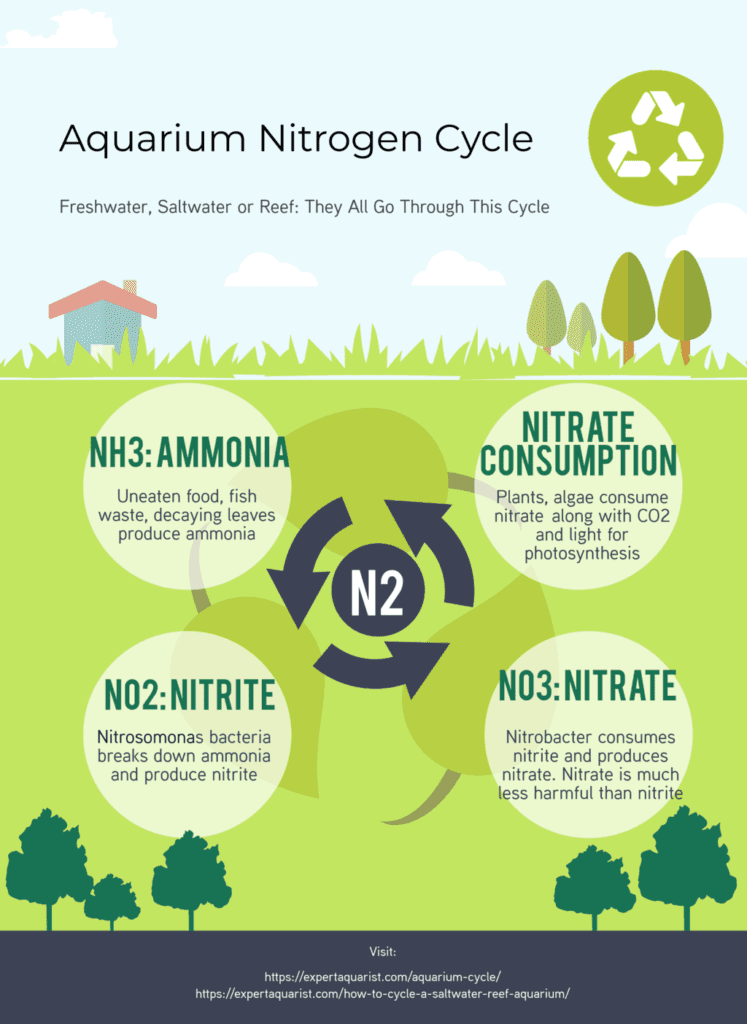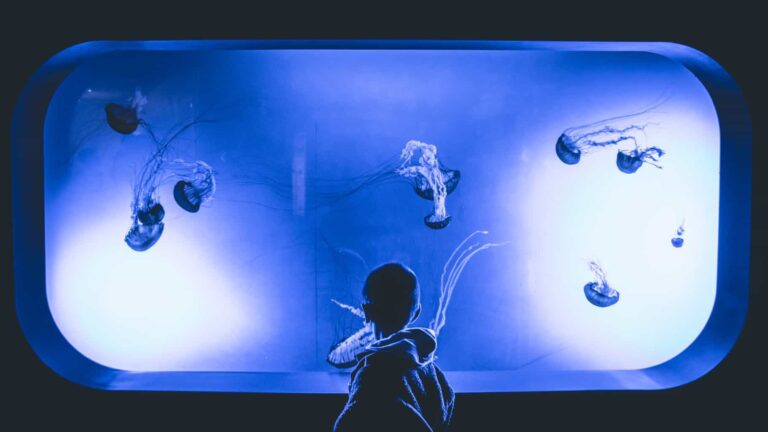According to the 2017-2018 survey on pet ownership by the American Pet Products Association (APPA), 2.5 million Americans own saltwater fish. Even though this number is very low compared to the 12.5 million freshwater fish owners, it is still a big number.
If you own a saltwater aquarium or a reef tank, then you must know that you have to cycle the tank first to keep your fish healthy. If you are a new or potential saltwater fish owner, keep reading to be informed about the crucial process.

Nitrogen Cycle for Saltwater Aquarium
The process of cycling the saltwater or aquarium is known as nitrogen cycling or nitrogen cycle. It is basically same as the cycling of freshwater aquarium. In the process, the water undergoes various biological changes aimed at chemically balancing the water so that it can sustain the marine life.
One crucial factor in sustaining marine life is good bacteria. In the nitrogen cycle, the beneficial bacteria are introduced in the aquarium or reef tank. The bacteria is important because it breaks down the harmful ammonia into nitrite and then nitrate hence making the reef tank safe for the fish and coral life. Therefore, concisely, the nitrogen cycle is the process where harmful ammonia is transformed to nitrite and then nitrate.
Why is nitrogen cycle important for a reef tank?
Just like when they are in the ocean, fish and corals pee and poop while inside the reef tank. Reef tank cycle helps in cleaning the water and ridding it of the harmful ammonia from the waste. If left unclean, the ammonia levels will escalate, and the environment will eventually be hostile for the fish and corals. In the end, the fish or corals will die from the excess ammonia buildup in the water.
Steps of the nitrogen cycle in your aquarium
Since saltwater aquarium takes longer to cycle than a freshwater aquarium, I recommend you set aside at least six weeks for this process. In the six weeks, your tank has to be free of any fish. Of course, there are ways of fastening the process, which I am going to cover next. First, let us look at the nitrogen cycle steps. You will need the following:
- A new saltwater aquarium or tank with necessary contents like pump, thermometer and other decorations (apart from marine life)
- A Seeding source like live rock, live sand or a bio filter media
- A testing kit for monitoring the levels of ammonia, nitrites, and nitrates
Step 1: Place The Seeding Source Into The Tank
Once you take out the marine life from the reef tank or aquarium, fill the tank with a seeding source of your choice. You can use live rocks, live sand or a bio filter media. Seeding sources are crucial components of the nitrogen cycle because they host anaerobic as well as aerobic nitrifying bacteria necessary for the nitrogen cycle process. As the bacteria forms, the water in the tank will become cloudy.
Step 2: Ammonia Oxidation
The next step will begin when the ammonia levels begin to decline. As the bacteria works on the ammonia, nitrite will be formed. Nitrite is formed when a bacteria known as Nitrosomonas oxidizes the ammonia.
The nitrite levels will keep growing until enough bacteria build up to eat up the nitrite. Nitrite is highly harmful to marine life.
The levels of nitrite will begin to rise after one week. They can also start to spike in the second week.
Step 3: Conversion of nitrites to Nitrates
The third and final stage is where nitrates are formed. Once the nitrite levels spike, a bacteria called Nitrobacter will be formed. The bacteria will then convert the nitrites into nitrates. Once the ammonia and nitrite levels of your reef tank or aquarium reach zero parts per million, your reef tank will have been fully cycled and hence safe for marine life.
Even though you have reached the end of the cycle, you still have to keep checking if the water is safe for your fish and corals. Nitrate levels of more than 20ppm are dangerous for marine life. To maintain a conducive nitrate level, regularly change the water partially.
Note: Throughout the cycle, keep testing the level of ammonia, nitrites, and nitrates in the water so that you know if the cycle is complete. This will help you know the right time to add marine life into the tank. By checking daily, you will also know the rate at which the bacteria are increasing in the water.
Even though you can cycle your reef tank or aquarium with one or two hardy fish still inside, I do not recommend cycling this way. If you do this, you expose your fish to high levels of ammonia and nitrites, which which will burn your fish’s gill. Therefore, if you love your fish, don’t buy them before you begin the cycling process and only bring them once you are sure that reef tank environment is safe.
How can you speed up the cycle process
Nitrogen cycle can go for up to two months. Luckily, with a good speeding product, you can cycle your tank in a few days. Some of these products contain high levels of enzymes that speed up the growth of bacteria, while others contain high levels of bacteria. I shall name a few of my favorite products –
Another method of speeding up the cycling process is by introducing a seeded live rock into the tank. A seeded live rock has high porosity, which enables it to carry high levels of bacteria. You can get the live rock from another tank (the rock should have stayed in the tank for a minimum period of six months), or from the local fish store.
Conclusion
Keeping your aquarium life does not have to be rocket science. An aquarium or reef tank cannot compare to an ocean. Nevertheless, I hope that the above information is going to help you keep your marine life healthy and happy.






